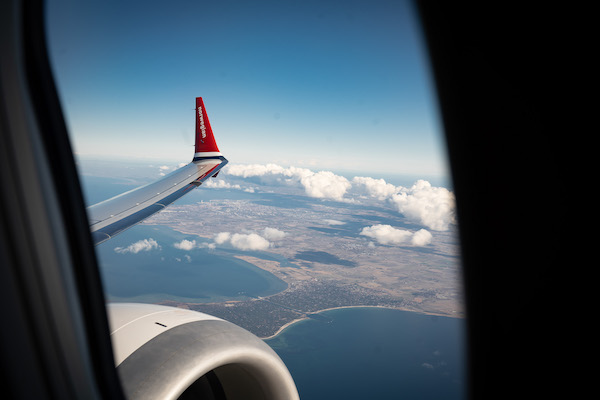Norwegian Air logged a strong performance in October, revealing a significant increase in passenger numbers. The airline transported over 2.5 million individuals, highlighting a remarkable operational month. Its success is attributed to increased capacity and strategic winter planning, underscored by the opening of a new base and promising booking trends.
The airline’s regional division, Wideroe, recorded unprecedented passenger figures, reflecting the continued demand in Scandinavian air travel. This upward trend came amid a 10% capacity augmentation and an impressive load factor near 87%. Regional and strategic efforts appear fruitful, positioning the airline for a promising winter season.
Passenger Growth and Capacity Utilisation
Norwegian Air reported a substantial increase in passenger numbers with over 2.5 million carried in October. The airline operated 85 aircraft on average, highlighting its operational scale. Its regional arm, Wideroe, set a new record with 372,757 passengers. These figures are reflective of the strategic capacity expansion undertaken by the airline, showcasing effective utilisation of its fleet resources.
Operational Strategy and Winter Preparations
Karlsen elaborated, “With winter and Christmas holidays approaching, strong booking momentum for Norwegian and Wideroe is evident.” The anticipation of strong bookings suggests a robust business strategy in place for handling peak travel seasons. The strategic positioning of the new base is expected to play a critical role as the airline seeks to capitalise on holiday travel demands.
Wideroe’s Strong Regional Performance
The strategic importance of Wideroe in Norwegian’s broader network cannot be understated. It serves as a crucial pillar in supporting regional connectivity, which enhances the airline’s comprehensive network strategy. This focus on regional markets underscores the airline’s commitment to maintaining strong regional routes.
Increased Load Factor and Revenue Growth
Looking forward, Norwegian Air seems well-positioned to maintain its momentum as it continues to focus on load efficiency and expanding capacity. The strategic steps taken by the airline in managing its resources and forecasting demand accurately contribute to its operational success.
Strategic Developments in Gran Canaria
This strategic move is aimed at broadening Norwegian Air’s operational footprint. By establishing a strong base in a popular destination, the airline plans to offer new leisure routes, thereby attracting a diverse passenger demographic. This development highlights the airline’s proactive approach to market changes and its ability to adapt to new travel trends.
Anticipated Booking Trends
The promising booking trends align with the airline’s long-term growth strategy, focusing on maximising seasonal peaks and maintaining customer loyalty. As a result, Norwegian Air is set to navigate the competitive landscape successfully.
Management and Resource Allocation
The airline’s strategic focus on allocating resources effectively ensures optimal operational performance and customer satisfaction. This approach not only enhances the airline’s service quality but also fortifies its competitive position in the air travel industry.
Wideroe’s Function in Norwegian’s Network
The regional airline’s success is a cornerstone in Norwegian’s comprehensive network. By maintaining essential regional routes, Wideroe supports the airline’s broader strategy of connectivity and service expansion, securing its stature in the competitive airline market.
Conclusion
Norwegian Air’s solid performance in October, driven by strategic capacity enhancements and strong regional operations, outlines a promising trajectory for the airline’s future growth. The opening of Gran Canaria base is set to bolster winter operations further, ensuring competitiveness in a dynamic air travel landscape.
Norwegian Air’s October results reflect robust growth and strategic foresight. The airline’s capacity to adapt and innovate positions it well for future successes, especially with the winter season ahead.

